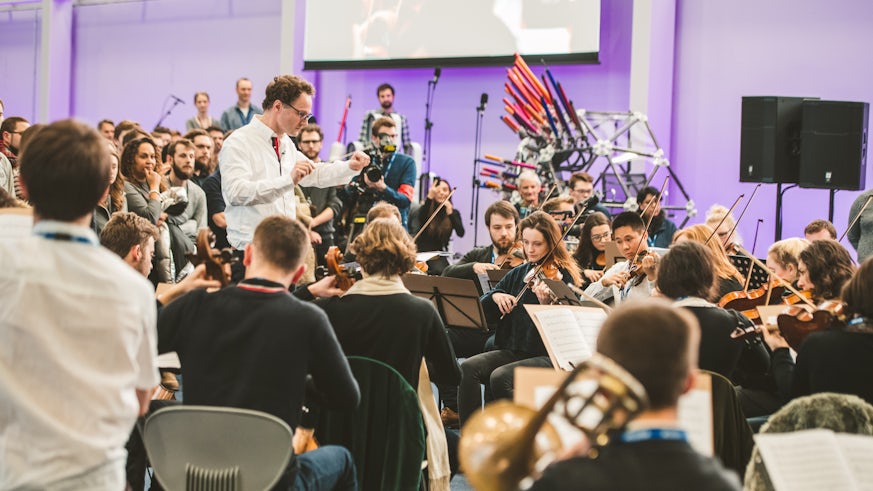Composing music with Dyson technologies
13 February 2018

The Cadogan Hall is set to host the premiere of a new kind of orchestral piece. The piece, composed by School of Music alumnus David Roche, will be performed by the Orion Orchestra and accompanied by the latest Dyson technologies.
The piece, Acoustical Anatomy, was commissioned following the Orion Orchestra’s biennial Young Composer’s Competition. The concept and brief emerged after a conversation between Sir James Dyson and the Orion Orchestra’s Artistic Director, Toby Purser.
Toby Purser said: “The initial concept was two Dyson Supersonics performing a duet accompanied by an orchestra, but thanks to the astounding knowledge and enthusiasm of Dyson engineers, it rapidly evolved into a piece that combines science and sound, fusing classical music and Dyson technologies together.”
In recent months, composer David has worked with more than fifty Dyson engineers to analyse the sounds of Dyson machines and develop ways to manipulate and control the sounds that make them unusual in order to create his piece.
Throughout the project, Dyson engineers have also created unique musical instruments, including The Amp-sichord, an array of 12 string instruments built into the bodies of Dyson Air Multipliers and played with a piano keyboard, and The Cyclophone, a 48-pipe organ constructed from V8 cordless vacuums tuned to different frequencies.
Of the project, David said: “Acoustical Anatomy is shaping up to be an extremely special piece of music and I am immensely proud of it. It has been a privilege to engage with the incredible new instruments, explore them in collaboration with teams of phenomenally intelligent and creative engineers at Dyson, have my composition performed by an amazing orchestra and conductor, and hear it all in a beautiful venue. It's something I've wanted to do since I was a child and it is amazing.
“Acoustical Anatomy required a lot of hands-on experimentation. This ranged from more immediate and fun experimentation such as filling vacuum cleaner bins with ball bearings to create an intense noise to using Dyson products to direct an air flow towards certain percussion instruments.”

After studying at Cardiff University School of Music, David then studied the University of Oxford and recently submitted his PhD in Music Composition at the University of Cambridge.
In 2018 he will work on commissions for Hear and Now in conjunction with Psappha as well as the Vale of Glamorgan Festival.
Reflecting on his time at Cardiff University, David said: “Studying at Cardiff University had – and continues to have – a profound, positive impact on my work. During my time there I found the educational support from Dr. Arlene Sierra and Dr. Charles Wilson particularly helpful and engaging. They are both people that pushed me academically, helped me to understand what aspects of work I needed to improve, and gave me an understanding of what I could try and do with my future.
“I tried my best to work with as many ensembles as possible during my time at Cardiff University. The cherry on top of my musical experiences at Cardiff has to be the creation of The Opera – a 2 hour opera for over 70 musicians composed with fellow student Martin Humphries. I think The Opera sums up the attitude to student music making at Cardiff University quite well: engaged, ambitious, totally willing to experiment, and deeply collaborative.”
Acoustical Anatomy will premiere at The Cadogan Hall on Sunday 18 Feb.
Share this story
The School provides a stimulating and supportive environment for musical scholarship, composition and performance.





